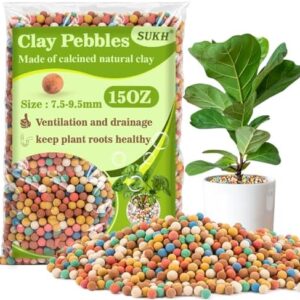Plants are truly amazing organisms, capable of harnessing the power of the sun to make their own food. But just like us humans, they need a little help to reach their full potential. That’s where fertilization techniques come in. By providing plants with the nutrients they need to thrive, we can help them grow bigger, stronger, and more beautiful.
Fertilization is all about maximizing plant health and nutrient absorption. It’s a carefully crafted process that involves giving plants the right balance of essential nutrients, such as nitrogen, phosphorus, and potassium, to help them grow and develop properly. But it’s not just about throwing some fertilizer on the ground and hoping for the best. There’s a science to it, and getting it right can make all the difference in the world for your plants.
One key aspect of fertilization is understanding the specific needs of your plants. Different plants have different requirements when it comes to nutrients, so it’s important to do your research and make sure you’re providing them with the right mix. For example, some plants may need more nitrogen to support their leafy growth, while others may require more phosphorus to encourage root development. By tailoring your fertilization approach to the needs of your plants, you can ensure they’re getting exactly what they need to thrive.
But it’s not just about the type of nutrients you’re providing – it’s also about how you’re delivering them. The way you apply fertilizer can have a big impact on how effectively your plants are able to absorb and use those nutrients. One common mistake that many gardeners make is over-fertilizing, which can actually harm plants rather than help them. Too much fertilizer can burn roots, inhibit nutrient uptake, and even leach excess nutrients into the environment, causing pollution.
To avoid over-fertilizing, it’s important to follow recommended application rates and schedules. This means carefully measuring out the right amount of fertilizer and applying it at the right time. For many plants, a slow-release fertilizer can be a good option, as it allows nutrients to be released gradually over time, providing a steady supply for the plant to take up as needed. This can help prevent nutrient imbalances and ensure that your plants are getting what they need without being overwhelmed.
Another important aspect of fertilization is soil health. Healthy soil is the foundation of a thriving garden, as it provides plants with a stable base to grow in and access to essential nutrients. By improving soil health through practices like composting, mulching, and incorporating organic matter, you can create a fertile environment that supports plant growth and nutrient absorption. Healthy soil is also home to beneficial microorganisms that help break down organic matter and release nutrients for plant uptake. By taking care of your soil, you can help ensure that your plants are able to make the most of the nutrients available to them.
In addition to providing plants with the right nutrients and creating a healthy growing environment, there are other factors that can affect nutrient absorption. One important consideration is pH balance. The pH level of soil can impact the availability of certain nutrients to plants, so it’s important to test and adjust the pH of your soil as needed. Most plants prefer slightly acidic soil, with a pH range of around 6 to 7, but some plants may have specific pH requirements. By monitoring and adjusting pH levels, you can help optimize nutrient uptake and promote healthy plant growth.
Watering practices can also play a role in nutrient absorption. Overwatering can lead to nutrient leaching, where nutrients are washed away from the root zone before plants have a chance to absorb them. Underwatering, on the other hand, can limit the ability of plants to take up nutrients from the soil. Finding the right balance when it comes to watering – providing plants with enough moisture without drowning them – is key to maximizing nutrient absorption and plant health.
One final aspect of fertilization to consider is the use of organic versus synthetic fertilizers. Organic fertilizers are derived from natural sources, such as compost, manure, or bone meal, and provide nutrients to plants in a slow-release form. They also help improve soil structure and support beneficial microorganisms. Synthetic fertilizers, on the other hand, are made from chemical compounds and provide nutrients in a readily available form. While synthetic fertilizers can be effective at quickly boosting plant growth, they may also have negative impacts on soil health and the environment.
Ultimately, the goal of fertilization is to maximize plant health and nutrient absorption in a sustainable and responsible way. By understanding the specific needs of your plants, providing them with the right nutrients, creating a healthy growing environment, and using best practices for fertilization, you can help your plants thrive and flourish. With a little care and attention, you can unlock the full potential of your garden and enjoy the beauty and bounty of healthy, vibrant plants.






